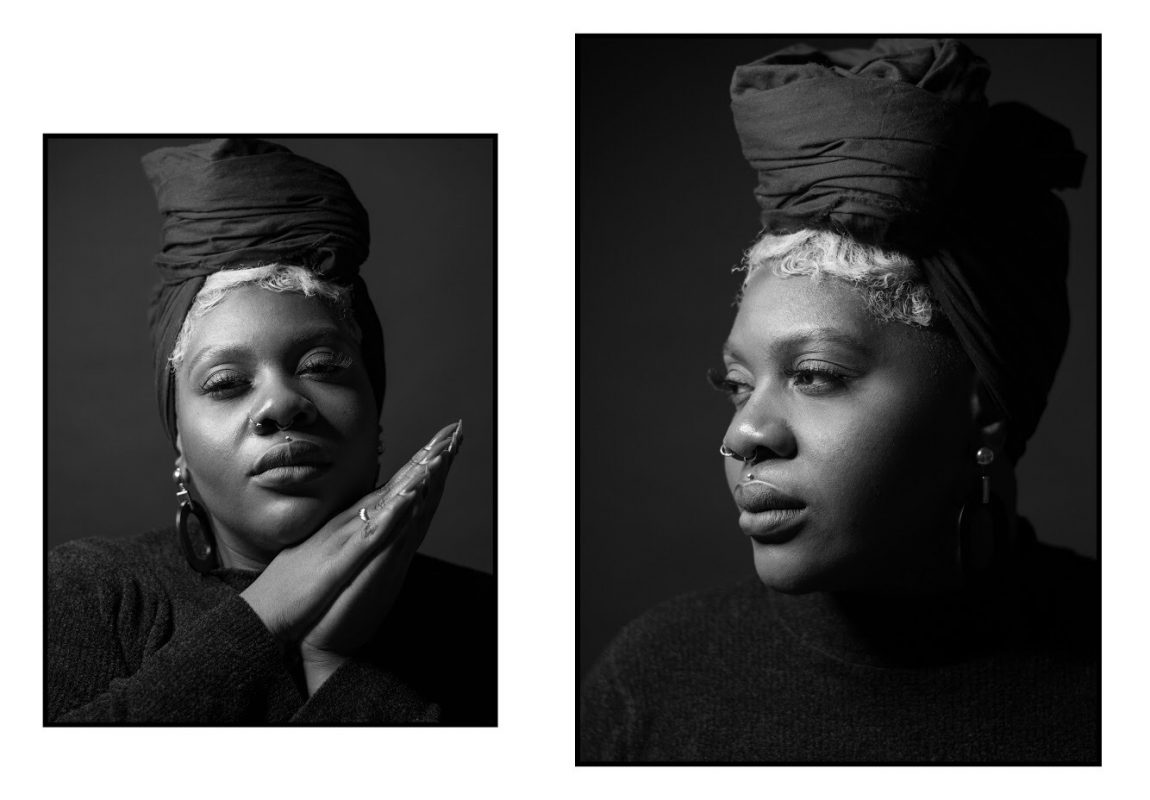
Though a trained choreographer and artist, Sharayna Christmas first describes herself as an “activist and a nurturer” who feels compelled to continue a longstanding tradition of nurturing activism here in Baltimore. The exhibitions and initiatives that she collaboratively curates through her arts collective Necessary Tomorrowsare done with the intention of fusing art and experiential learning environments to uplift and inspire the city’s underserved communities.
In her latest exhibit, inspired by the activism of her own mother, the womanist movement, and the mentorship of elders, Christmas continues the work of highlighting the lives and legacies of black women, teaming with Kibibi Ajanku, curator-in-residence at the Frederick Douglass-Isaac Myers Maritime Museum, to launch We Choose, now on view in the museum’s Bearman Gallery in Fells Point through September 27.
“A lot of the artists that I work with have never been in an exhibition,” says Christmas. “I understand that I was once given an opportunity [and] I try to offer that same kind of support with my programming and the exhibitions that I curate.”
A group exhibition, We Choose showcases multimedia installations, oil and acrylic paintings, textiles, glassworks, photography, and assemblage from a dozen emerging artists whose work elicits distinct perspectives about black womanhood.
“I appreciate that when black women are in the same room, there are so many things that can happen; collaborations, rebirth,” says Christmas. “So here we are bringing together in a different capacity a new show that allows artists to define what ‘We Choose’ means for themselves.”
Those definitions are myriad and complex. In Kayla Morgan’s three-dimensional installation, Rosa The Riveter, the mixed-media artist reimagines the iconic World War I propaganda caricature of a similar name as a black hand that squeezes the muscles of a flexed forearm. The sculpture is set within a frame that is covered in ripped black and red bandanas, raising questions about racial disparities surrounding labor, as well as stereotypes about black and Latinx women’s unflinching strength and seeming invulnerability.
Meanwhile, Jazmine Johnson’s untitled photography installation, unpacks the ways black women’s bodies have historically been leveraged, commoditized, and sacrificed for others’ gain or civil liberties. Each photograph is named for a prominent writer, scholar, or activist, including Sonia Sanchez, Audre Lorde, Zora Neale Hurston, and Maya Angelou. Each depiction is charged with images of black women in the throes of protest and overlaid with text from radical quotes by each woman.
April Daniel Lewis’ black-and-white short film, Black Wash, is installed at the center of Johnson’s photographs. In it, a woman appears to be washing black paint or ink from her hands and arms, but upon closer review, the near 6-minute film is playing in reverse—the woman is washing the black onto her skin, rather than removing it. Lewis’s clever and satirical film flips racist tropes and mythologies that have likened melanin with dirt, and dark complexions with ugliness.
Queen, a subtle acrylic painting from a larger series by Victoria Rouse, turns its attention toward the discrimination that black women with natural hair face in conservative settings. The back of a head full of dreadlocks is surrounded by an ornate golden motif. Rouse’s subject does not confront the gaze of the viewer. Rather, we, the viewers, are confronted by their hair, a metaphoric crown.
We Choose is a small but compelling exhibition that gives a platform to rarely exhibited works by a collection of emerging artists. But the goal of this collection is larger than simply showcasing local art.
“Particularly for the artists, I want people to say, this is how I see myself, and I am sharing that with you without judgement,” says Christmas. “If black women can continue to drop the curtain and see themselves outside of an exhibition, in their own space, in their own mind, in their own spirituality, that would be enough for me.”